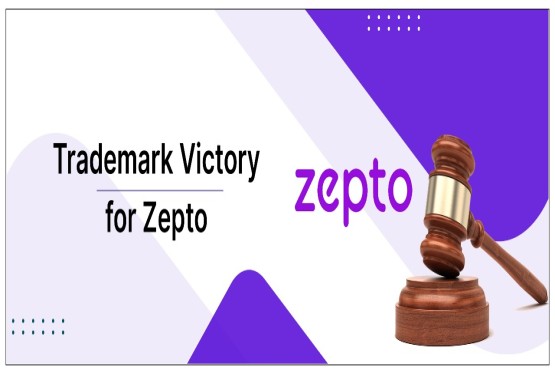A trademark is a cornerstone of intellectual property law, offering legal protection to a symbol, name, logo, or other distinctive sign that identifies and differentiates a business's goods or services. Trademarks serve multiple functions, but their primary purpose is to protect the goodwill of the business and ensure consumer trust by preventing confusion in the marketplace. This article explores the primary purpose of trademarks, supported by statutory provisions, case laws, and global perspectives.
What is Trademark?
A trademark is defined under Section 2(1)(zb) of the Trade Marks Act, 1999, as a mark capable of being represented graphically and distinguishing the goods or services of one person from those of others. It can include words, names, slogans, colors, shapes, sounds, or a combination of these.
The essential feature of a trademark is its distinctiveness, which allows consumers to associate specific goods or services with a particular source.
Primary Purpose of a Trademark
The primary purpose of a trademark is threefold:
-
Identification of Source: A trademark indicates the source of goods or services, ensuring consumers know where the product originates.
-
Prevention of Consumer Confusion: By distinguishing one brand from another, trademarks reduce the risk of deception in the marketplace.
-
Protection of Goodwill: Trademarks safeguard the reputation and goodwill built by a business over time, ensuring competitors cannot exploit it unfairly.
1. Identification of Source: One of the most fundamental purposes of a trademark is to act as a badge of origin, helping consumers identify the producer or provider of a good or service.
Statutory Framework
-
Section 28(1) of the Trade Marks Act, 1999: Grants exclusive rights to the registered proprietor to use the trademark in relation to the goods or services for which it is registered.
-
Section 29: Prohibits unauthorized use of a registered trademark to protect its association with the rightful owner.
Case Law: Toyota Jidosha Kabushiki Kaisha v. Prius Auto Industries Ltd. (2018)
The Supreme Court held that a trademark must establish a connection with its source in the mind of the consumer. The judgment highlighted the importance of proving goodwill and association with the trademark in the relevant jurisdiction.
2. Prevention of Consumer Confusion: Trademarks play a crucial role in protecting consumers from confusion or deception by ensuring that similar goods or services can be distinguished in the marketplace.
Statutory Framework
-
Section 11: Prevents the registration of marks that are identical or deceptively similar to an earlier trademark.
-
Section 29(2): Provides that Trademark Infringement occurs when the use of a similar mark is likely to cause confusion or an association with the registered mark.
Case Law: Amritdhara Pharmacy v. Satya Deo Gupta (1963)
The Supreme Court emphasized that the test for deceptive similarity involves examining whether an ordinary buyer would confuse the two marks. The case illustrates how trademarks protect consumers from being misled into purchasing counterfeit or inferior products.
3. Protection of Goodwill: A trademark safeguards the goodwill that a business has built over years of consistent quality and reliability. Goodwill is the intangible asset that gives a business its reputation and customer loyalty.
Statutory Framework
-
Section 9(1): Requires trademarks to be distinctive and not devoid of any distinctive character, reinforcing the connection with goodwill.
-
Section 30(1): Limits the use of a trademark in ways that may dilute its distinctiveness or harm its reputation.
Case Law: Daimler Benz v. Hybo Hindustan (1994)
The Delhi High Court held that using the name "Benz" for undergarments would dilute the goodwill associated with the luxury car brand. The court stressed the importance of protecting the goodwill of a renowned trademark.
Secondary Purposes of a Trademark
While the primary purposes are foundational, trademarks also serve secondary objectives that complement their main functions.
1. Encouraging Fair Competition: Trademarks prevent unfair competition by prohibiting businesses from exploiting another’s reputation or goodwill. This ensures that the marketplace remains equitable and encourages innovation and quality.
Case Law: M/S Haldiram Bhujiawala v. Anand Kumar Deepak Kumar (2000)
The Supreme Court held that trademarks prevent unfair competition and ensure that no party takes undue advantage of another’s reputation or goodwill.
2. Creating Consumer Confidence: A trademark fosters consumer confidence by assuring them of consistent quality. When a consumer recognizes a trademark, they associate it with a certain standard of goods or services.
Case Law: ITC Ltd. v. Nestle India Ltd. (2016) The court noted that trademarks build consumer trust by offering assurance of the source and quality of goods or services.
3. Economic Benefits: Trademarks also contribute to the economy by encouraging businesses to invest in brand building and innovation. Strong trademarks add value to a business, creating avenues for licensing, franchising, and business expansion.
The Role of Trademarks in Modern Commerce
In an increasingly globalized and digital economy, the role of trademarks has expanded. Businesses rely heavily on trademarks to maintain their identity in the marketplace.
1. Online Brand Protection: The rise of e-commerce and social media has increased the risk of brand misuse and counterfeiting. Trademarks play a vital role in protecting businesses in online platforms.
2. International Protection: The Madrid Protocol allows businesses to register trademarks in multiple jurisdictions with a single application, extending the benefits of trademark protection across borders.
3. Protection Against Cybersquatting: Trademarks help combat cybersquatting, where individuals register domain names resembling well-known trademarks to exploit their reputation.
Case Law: Yahoo Inc. v. Akash Arora & Anr. (1999)- The Delhi High Court ruled that the domain name "Yahoo India" infringed the trademark rights of "Yahoo," highlighting the role of trademarks in cyberspace.
4. Balancing Competing Interests: While trademarks protect businesses and consumers, they must also balance competing interests, such as freedom of trade and competition. The law ensures that trademarks do not become monopolistic tools that stifle competition.
Case Law: Ramdev Food Products Ltd. v. Arvindbhai Rambhai Patel (2006)
The Supreme Court noted that while trademarks protect goodwill and reputation, they should not impede fair competition or restrict legitimate trade practices.
Global Perspectives on the Purpose of Trademarks
Trademark laws across jurisdictions align with the primary purposes of source identification, consumer protection, and goodwill preservation.
United States
Under the Lanham Act, trademarks primarily aim to protect consumers from confusion and ensure fair competition. The U.S. law also emphasizes preventing trademark dilution.
European Union
The EU Trade Mark Regulation highlights the importance of trademarks in identifying origin, maintaining competition, and protecting consumers.
Comparison with Indian Law
India’s trademark laws under the Trade Marks Act, 1999, align closely with global norms but emphasize preventing deceptive similarity and misuse in local markets.
Conclusion
The primary purpose of a trademark is to protect the source, reputation, and goodwill of a business while ensuring consumer trust and preventing confusion. The Trade Marks Act, 1999, provides a robust framework for achieving these objectives, as evidenced by numerous landmark judgments.
Trademarks are more than legal tools; they are essential for fostering fair competition, building consumer confidence, and promoting economic growth. In a world where brand identity is paramount, understanding and leveraging the primary purpose of trademarks is crucial for businesses aiming to establish and sustain their presence in the marketplace.
Frequently Asked Questions
Q1. What is the primary purpose of a trademark?
Ans. The primary purpose of a trademark is multifaceted. It serves as a unique identifier that indicates the source of goods or services, guiding consumers in their purchasing decisions. By distinguishing one brand from another, trademarks prevent consumer confusion and deception, ensuring that consumers are not misled about the origin of products. Furthermore, trademarks play a crucial role in protecting the goodwill and reputation that a business has built over time, safeguarding its valuable brand equity.
Q2. How does trademark law prevent consumer confusion?
Ans. Trademark law actively prevents consumer confusion by prohibiting the registration and use of trademarks that are identical or deceptively similar to existing marks. This legal framework ensures that consumers can easily differentiate between brands and avoid being misled into purchasing counterfeit or inferior products. By minimizing the risk of confusion, trademark law fosters a fair and transparent marketplace.
Q3. How does a trademark protect a business's goodwill?
Ans. A trademark acts as a shield, protecting the goodwill and reputation that a business has diligently built over years of consistent quality and reliability. By preventing others from using confusingly similar marks, trademark law safeguards the unique identity and brand equity of a business. This protection encourages businesses to invest in brand building and innovation, knowing that their hard-earned reputation is legally protected.
Q4. What are some secondary purposes of a trademark?
Ans. Beyond its core functions, a trademark serves several secondary purposes. It plays a vital role in fostering fair competition by preventing unfair practices and ensuring that businesses compete on a level playing field. Trademarks also contribute to consumer confidence by assuring consumers of the quality and reliability associated with a particular brand. Furthermore, strong trademarks can provide significant economic benefits by driving innovation and facilitating business expansion through avenues like licensing and franchising.
Q5. How does the global legal framework support the primary purposes of trademarks?
Ans. While specific regulations may vary across jurisdictions, the fundamental principles of trademark protection are universally recognized. Trademark laws in countries like the United States, the European Union, and India all share common goals: to identify the source of goods or services, prevent consumer confusion, and safeguard business goodwill. This global consensus underscores the critical role of trademarks in facilitating fair trade, protecting consumers, and fostering a thriving global marketplace.






























_(b)_of_the_Trademark_Act,_1999_(1)_crop10_thumb.jpg)



_crop10_thumb.jpg)




























_crop10_thumb.jpg)
_crop10_thumb.jpg)






_crop10_thumb.jpg)








_crop10_thumb.jpg)



_crop10_thumb.jpg)





























_crop10_thumb.jpg)

















_crop10_thumb.jpg)






_crop10_thumb.jpg)











































































































































_crop10_thumb.jpg)




































_crop10_thumb.jpg)












_crop10_thumb.jpg)






































